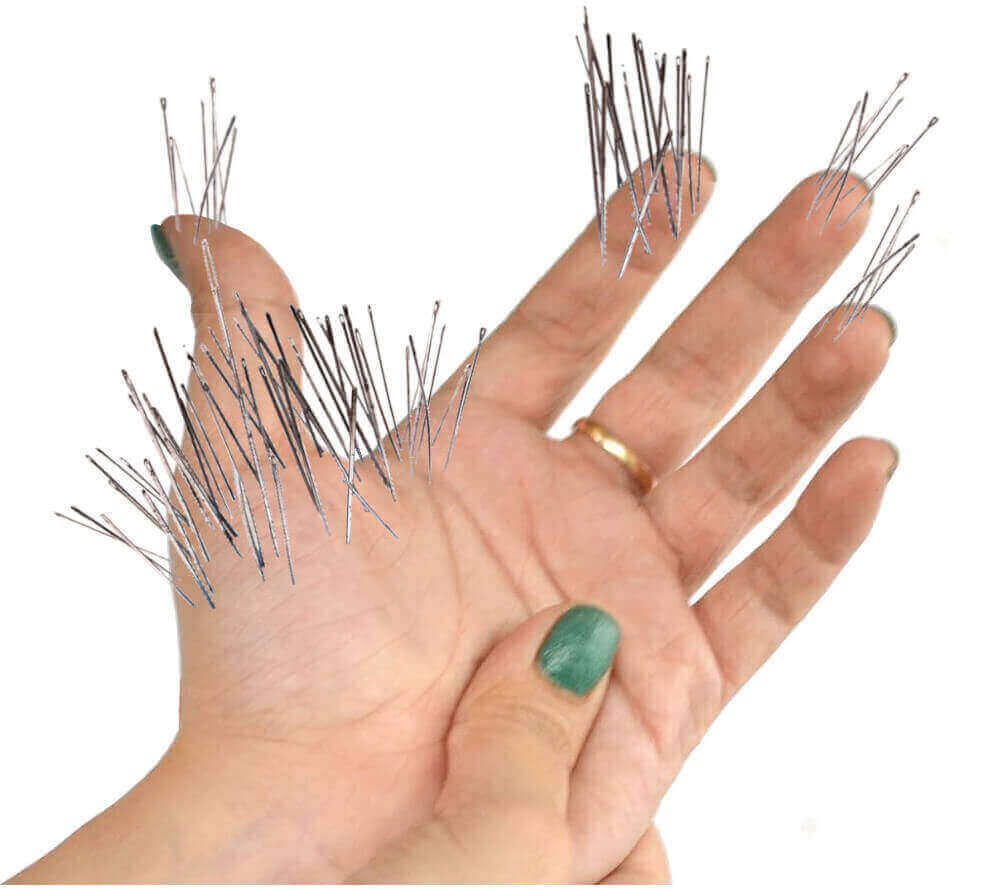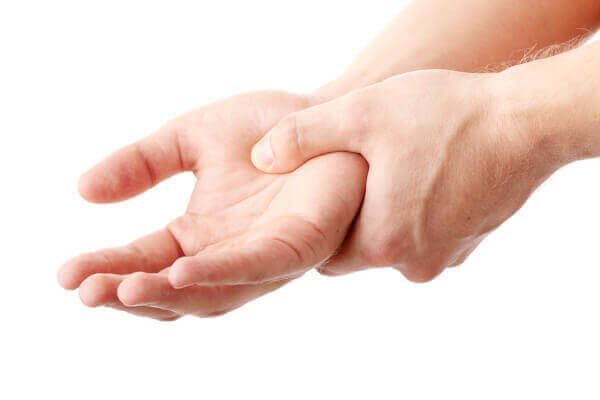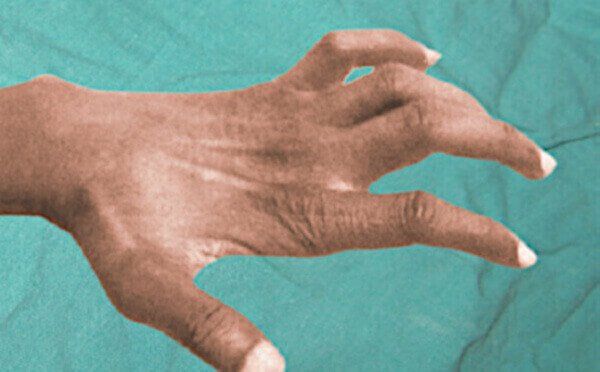What are Symptoms of Carpal Tunnel?
Table of Contents
- Introduction
- What is carpal tunnel?
- High risk occupations
- Other high risk factors
- Common symptoms of carpal tunnel
- Mild stage symptoms of carpal tunnel
- Moderate stage symptoms of carpal tunnel
- Severe stage symptoms of carpal tunnel
- End stage symptoms of carpal tunnel
- Treating symptoms of carpal tunnel
- Summary
- FAQs
- About
Introduction
The main symptoms of carpal tunnel syndrome concentrate on the hand and fingers. Having a numb hand or fingers while trying to sleep is usually the first sign. Feelings of clumsiness while grasping, or shooting electric shocks are also common. Sometimes hand or finger pain is the first sign. The pain can have a dull throbbing or sharp stinging feeling.
These are just some of the symptoms of carpal tunnel syndrome. As the condition advances, the symptoms become more intense. Often, other symptoms also enter the picture.
This article describes what you will feel throughout the 4 stages of carpal tunnel syndrome - from the mild stage to the end (terminal) stage.
What is carpal tunnel?
The condition known as carpal tunnel syndrome (or just "carpal tunnel") is a nerve disorder. The
median nerve, which is a major nerve of the hand, becomes crushed by swollen
flexor tendons. (These are the tendons which curl your fingers.) So it's the
crushed median nerve
that causes all of the unusual symptoms of carpal tunnel.
But why do the flexor tendons swell to begin with? The underlying cause of the swelling is unknown. But we do know that certain
factors put you at high risk for getting carpal tunnel syndrome.
First and foremost of these "risk factors" is how you use your hands most of the day (your occupation). Other risk factors are unavoidable, like being female, your build, and your general health.
High risk occupations
Other high risk factors
Common symptoms of carpal tunnel
In most cases, symptoms of carpal tunnel progress from barely noticeable to severe in about 6 months. But it's not unusual for some people to take a year to see intense
severe symptoms.
Also, in over 80% of cases, patients will see symptoms occur on the other hand within 6 months. This bilateral carpal tunnel syndrome can occur simultaneously in both hands, but such is rarer.
Mild stage symptoms of carpal tunnel
Mild symptoms of carpal tunnel syndrome are those where the disorder is just starting out. Symptoms are confined to the fingers and hand. The little (pinky) finger is never affected. Symptoms are most noticeable when you're trying to sleep because they keep waking you up.
- Numbness: In the fingers and hand, mostly in the thumb and palm area; most prominent at night.
- Pain:
Dull or sharp, constant or intermittent.
- Tingling: Pins & needles feelings, usually occurs with numbness.
- Burning:
Constant or intermittent; eased with ice bath, although it's just a placebo effect.
- Electric shocks: Usually upon gripping; feelings can shoot from the hand to the arm.
- Itching:
Usually intense and constant, mostly in the palm area.
- Puffiness: Fingers & hand feel puffy, even though there's no sign of swelling.
- Weakness:
Hand feels weak because grip strength is less. Most noticeable when opening a jar or turning a doorknob.
- Clumsiness:
Patients often drop things; hands feel "large".
- Dexterity:
Difficulty picking up coins, buttoning a shirt, tying a shoelace.
During the mild stage, it's rare for symptoms of carpal tunnel syndrome to appear during the daytime. And if they do, they will almost never appear while you're working with your hand. Instead, the symptoms appear when you take a rest break.
In contrast,
wrist tendonitis symptoms only appear when your hand is working and not at rest. This is one of the ways you can
tell the difference between carpal tunnel syndrome and wrist tendonitis.
Moderate stage symptoms of carpal tunnel
The moderate stage of carpal tunnel is when the median nerve is crushed even more by the swollen flexor tendons. As a result, the same symptoms you had in the mild stage begin to intensify.
Also during the moderate stage, symptoms of carpal tunnel syndrome are almost always present during the daytime as well as at night. Sometimes the symptoms appear while you're working with your hand. Other times they become more intense when you take a rest break.
As the moderate stage progresses, symptoms intensify even more. Eventually, they will become bothersome almost all the time, without a break.
This is how you know the disorder is progressing.
Moderate symptoms of carpal tunnel syndrome are just like in the mild stage, just more intense and more ever-present. In fact, there is very little rest from the more intense symptoms. New symptoms also may appear:
- Loss of temperature sensitivity:
This is a new sensation. Patients may have slight insensitivity to hot or cold at their fingertips.
- Numbness: What was annoying is now intense; it's present day and night.
- Pain:
Becomes constant, and is usually in the background of other symptoms.
- Tingling: The feeling becomes more "prickly" and is almost a part of the numbness.
- Burning:
Not present.
- Electric shocks: More intense and frequent, and not only when gripping.
- Itching:
Not present.
- Puffiness: Fingers & hand feel more intense puffiness even though there's no sign of swelling.
- Weakness:
Hand is much weaker; loss of grip strength means turning door knobs & opening car doors is difficult.
- Clumsiness:
Patients are now wary of holding things because of dropping them.
- Dexterity:
Finger movement and fine dexterity are catastrophically affected.
Severe stage symptoms of carpal tunnel
The severe stage of carpal tunnel syndrome is, by definition, when symptoms have taken over your life. They're ever-present and there is no relief from them. Patients describe the pain and numbness as crushing, cruel, punishing, and relentless.
This stage is when most of the median nerve is in deep trouble. It is on it's way to dying due to the crushing pressure of the swollen flexor tendons.
Severe symptoms of carpal tunnel will likely include most of the symptoms in the mild and moderate stages.
But symptoms will be maximally intense. They will also last day and night with no relief whatsoever.
Pain relievers like Advil and Tylenol do not help in the severe stage. Nor do ice baths.
Steroid injections may still be beneficial, but usually only marginally. Even
carpal tunnel release surgery has a
much lower probability of success.
- Loss of temperature sensitivity:
This sensation reaches its maximum. Patients must be careful around the kitchen because they can burn their fingertips without knowing it.
- Numbness:
This sensation is now widespread throughout the palm and 4 fingers. It's intensity is described as "crushing" and patients often say,
"I want to cut my hand off."
- Pain:
Pain also reaches its maximal intensity. It is persistent and also involves most of the hand.
- Tingling:
Not present.
At this point, the overpowering numbness dulls the tingling sensation. However, some residual tingling may be felt at the fingertips.
- Burning:
Not present
- Electric shocks: Not present or much
less frequent or intense. That's not a good sign because it means the median nerve is dying.
- Itching:
Not present.
- Puffiness:
Not present.
This symptom is overpowered by the pain and numbness. It usually does not appear at this stage.
- Weakness:
Hand is catastrophically weak. Grip strength is all but lost.
- Clumsiness:
Patients cannot hold anything without dropping it.
- Dexterity: Complete loss of fine finger movement and dexterity. Many patients need help with toileting, bathing, grooming, and dressing.
End stage symptoms of carpal tunnel
The end stage (terminal stage or atrophy stage) is when symptoms of carpal tunnel are no longer reversible. The median nerve has nearly or completely died. As it dies, it causes the thumb muscles to atrophy (degenerate and shrink).
You can see this as muscle loss at the base of the thumb. The normally plump
thenar muscles flatten out. The skin overlying them wrinkles and thumb function is lost.
Surgeons will not perform
carpal tunnel surgery at this stage. There is no chance it will help.
- Thumb muscle loss:
You can no longer grip using your thumb.
- Claw hand:
The fingers form a "claw hand" due to loss of signals from the dead median nerve.
- Loss of temperature sensitivity:
This sensation is still at its maximum and will never get better.
- Numbness:
This sensation is still widespread and just as "crushing"; it will also never get better.
- Pain:
Ironically, pain diminishes drastically. This may feel better, but it's because your median nerve has died.
- Tingling:
Not present.
- Burning:
Not present
- Electric shocks: Not present.
- Itching:
Not present.
- Puffiness:
Not present.
- Weakness:
Continued
catastrophic weakness and loss of grip strength.
- Clumsiness:
Continued clumsiness.
- Dexterity: Continued complete loss of fine finger movement and dexterity.
Treating symptoms of carpal tunnel
Every stage of carpal tunnel syndrome can be treated except for the end stage. There are two basic types of treatments:
surgical and nonsurgical.
Surgical treatments include two types:
open and
endoscopic carpal tunnel release surgery. Each has its
advantages and disadvantages. Chief among them are possible
complications associated with each one. Also,
post-surgical pain and your total
recovery time can be vastly different depending on the type of operation.
Non-surgical treatments are effective in most carpal tunnel patients regardless of their stage of the disorder. But the greater the severity, the more (greater number) non-surgical treatments are required to see good results
.
The most successful nonsurgical treatments are as follows:
- Rest your hands periodically while working. Also avoid the activity that's stressing your hand. Rest is only effective during the mild stage.
- Night bracing is highly effective for all stages of carpal tunnel syndrome. But use only a
certified carpal tunnel brace. That's because "pharmacy braces" are not suited to treat this disorder.
- Stretching exercises are also highly effective at all stages of carpal tunnel. The
best stretching exercises lubricate tendons and destroy
adhesions which restrict movement and cause swelling of flexor tendons.
- Steroid injections, as discussed above, are only effective in the mild and moderate stages. Sometimes they're beneficial in the severe stage, but only rarely.
- Myofascial release massage is perhaps the most effective of the above non-surgical remedies. This therapy breaks adhesions, drains excess fluid, and restores blood flow to the wrist. But it's not easy to perform this therapy on yourself.
The
American Academy of Orthopedic Surgeons strongly advises that all patients should try non-surgical treatments for carpal tunnel syndrome first, before considering surgery. The reason is three-fold:
- Non-surgical treatments work in most patients. More severe or advanced carpal tunnel syndrome requires simultaneous application of different non-surgical remedies.
- The success rate of surgery diminishes with severity. That means the more severe the disorder, the less the chance of having a good outcome.
- When combining surgical treatment types, only 50% of surgical patients have good results by 2 years. The major reasons for surgical failure are
return of symptoms and
persistent pain.
Summary
Symptoms of carpal tunnel symptoms start slowly and almost without notice. The mild stage essentially is an annoyance. But the moderate stage is when symptoms become seriously bothersome. In the severe stage, they dominate your life. By the time you reach the end stage, there is nothing that can be done to restore your hand. Therefore, treat symptoms before they worsen! In essence, the more advanced the condition, the more difficult it is to treat it.
FAQs
Do all cases of carpal tunnel progress from mild stage to end stage?
No. Many cases progress to a certain stage and plateau at that stage. The plateau may be indefinite and can last for years.
Does carpal tunnel get better on its own?
Sometimes. While not common, mild stage carpal tunnel is known to go into spontaneous remission, with little or no hand rest. More severe cases are much less likely to have spontaneous remission.
If I have end stage carpal tunnel, is there no cure?
Unfortunately, end stage carpal tunnel does not have a cure or an effective treatment.
About












